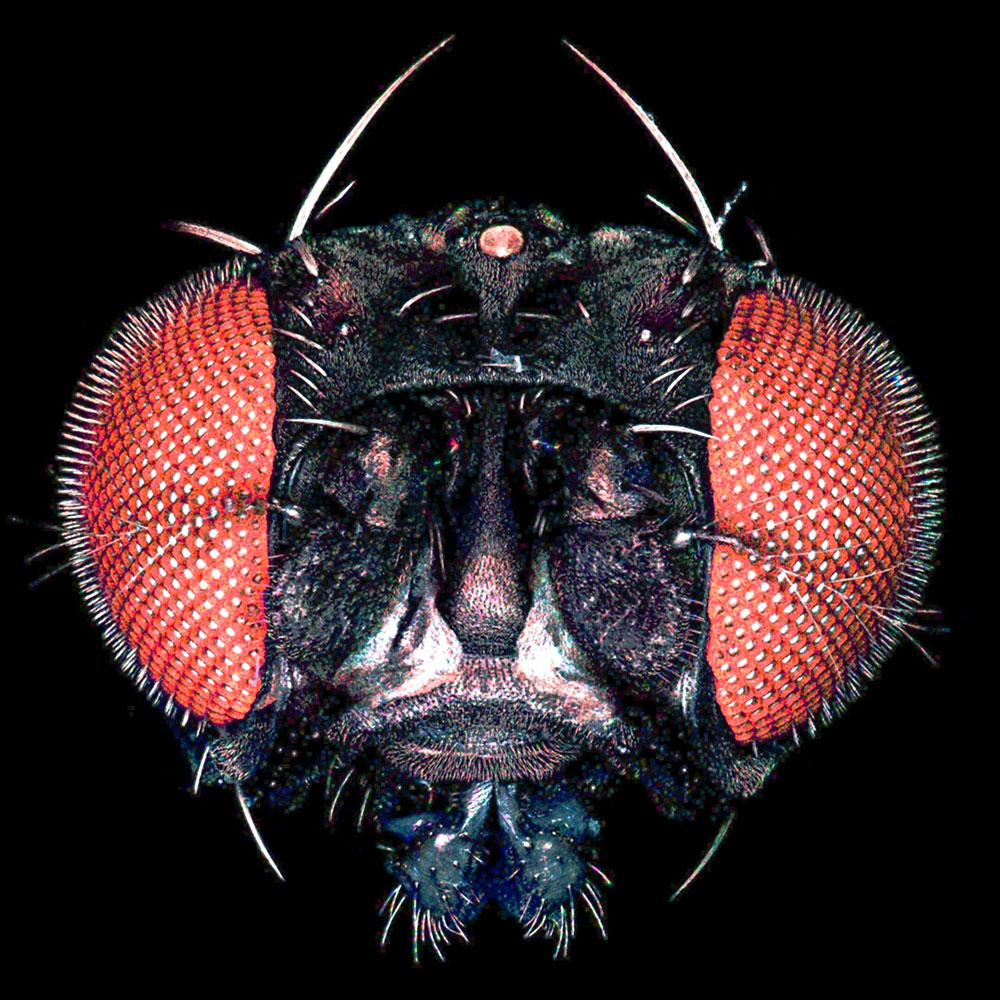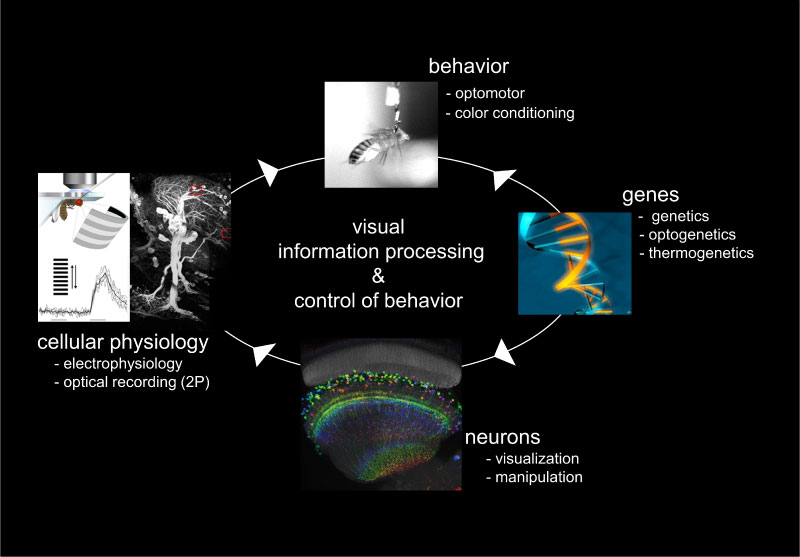Reiff Lab

Dept. for Animal Physiology, Neurobiology and Behavior
Albert-Ludwigs University Freiburg
Institute for Biology I (Zoology)
Hauptstraße 1
D-79104 Freiburg
Phone: ++49 / 761 / 203 - 2576
Fax: ++49 / 761 / 203 – 2596
E-Mail: dierk.reiff@biologie.uni-freiburg.de
http://www.bio1.uni-freiburg.de/tierphys/
Office: Andrea Buderer / Silke Uebelherr
Phone: ++49 / 761 / 203 - 2539
Fax: ++49 / 761 / 203 – 2596
E-Mail: tierphys@biologie.uni-freiburg.de
News
 |
Color Processing in the Early Visual System of Drosophila Cell Share Link – free access until 02. March 2018 https://authors.elsevier.com/a/1WNMgL7PXQvQi |
Research Interest (summary)
Our lab is interested in visual information processing and the control of visually guided behaviour in fruit flies (Drosophila melanogaster). Small animals like fruit flies exhibit stunningly complex and robust innate behaviours that warrant survival and reproduction of the animal. Thereby, behaviour is controlled by neural circuitries of small size and aparantly apparently reduced complexity. About 100.000 neurons, that may fall into maximallyum 150 different neuronal classes, establish the connections and the highly repetitive micro-circuitries of the Drosophila visual system. Some of these neurons and circuitries are specialized in extracting and computing information on visual motion and colour from the visual scene. Identification and characterization of these neurons is at the focus of research in our lab.
Recent advances in technology and genetics have provided us with powerful tools for the precise genetic targeting of individual types of neurons and the manipulation and/or monitoring of neuronal activity in vivo during sensory processing in behaving or non-behaving flies. Using a combined genetic, physiological and behavioural approach we aim at disclosing the identity and function of the biological hardware underlying the detection of visual motion & colour and the control of visually guided behaviour. Interventional genetics are used to establish causal relationships between the activity of identified neurons and a given visual computation or behaviour. Our work is aided by the recent finding that motion and colour information is processed in partially overlapping sets of photoreceptors and downstream neurons. Finally, in a recent and fascinating project we started to investigate the role of Down-Syndrome Cell Adhesion Molecules in the development, growth, connectivity and function of an identified visual circuitry of the fly1.
1 In collaboration with the Schmucker lab
Methods used in the Lab: In vivo 2-Photon Laser Scanning Microscopy, genetically encoded activity reporters, calcium imaging, whole-cell recording, ERGelectro-retinogram, real time virtual reality, medium-speed video analysis, high-frequency wing beat analysis, optomotor behaviour, colour conditioning, immunolabeling, high resolution confocal microscopy, molecular cloning & transgenics.


